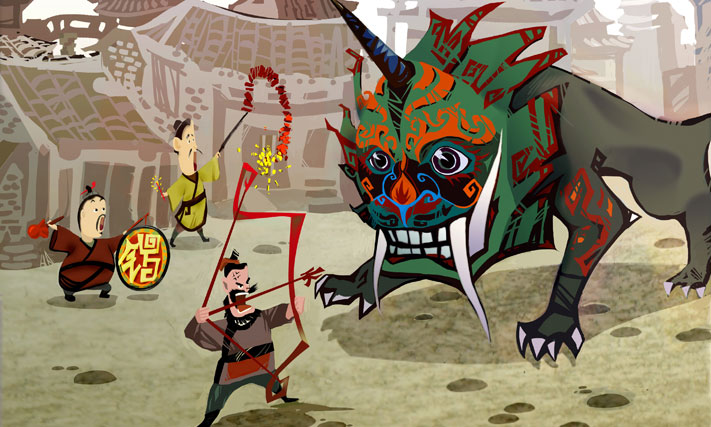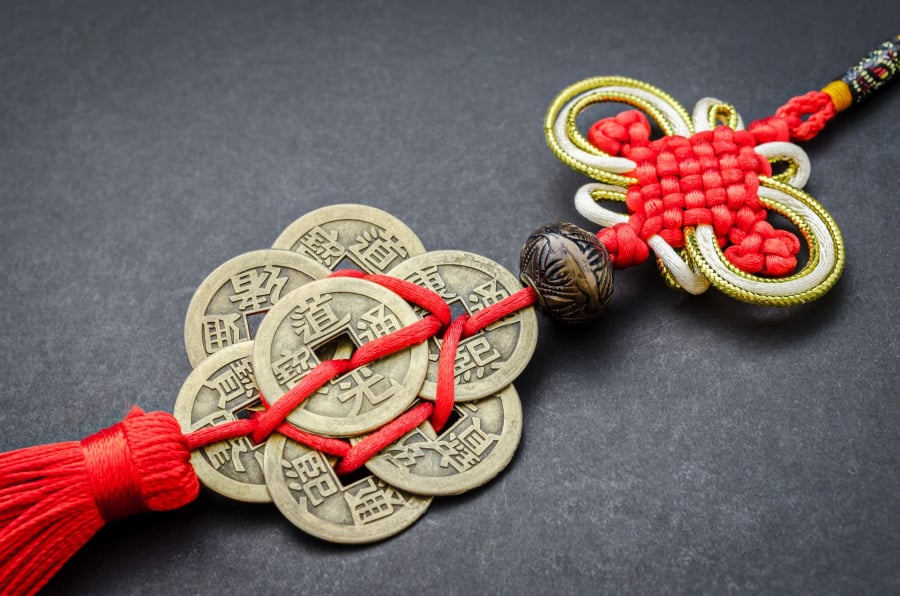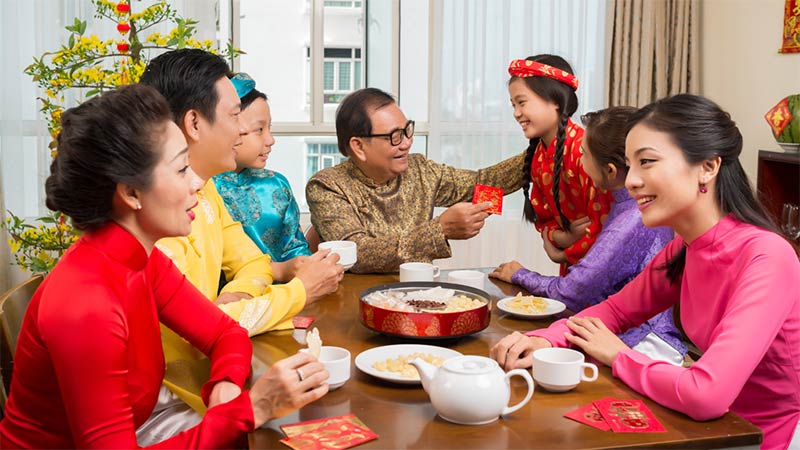The word “li xi” comes from the Chinese word “loi thi”. In Mandarin, this custom is called “hong bao” and in Cantonese, “loi thi”. No matter what name it is called, li xi means lucky money, good fortune, and goodness.

If adults give lucky money to children, it means they hope to pass on a year of luck and blessings to the children. If young people give lucky money to the elderly, it carries a message of wishing them longevity and showing their gratitude to the older generation.
Legendary
According to legend, there was a monster called Nian (年). Once a year, it would come out of the forest at night and devour the entire village. The steps to protect against Nian on New Year's Eve gradually turned into a spring festival. Parents would give their children some money that night. In this way, the children would have something to bribe the monster or other evil spirits.

In another popular story, there is a demon named Sui (祟). On New Year's Eve, it will come and pat the heads of sleeping children. Its touch will haunt the children. To protect their children, parents will have to stay awake all night.
A couple gave their child a coin to play with. When the child fell asleep, they placed the coin next to his pillow. At midnight, a strange wind blew out the candle. When Sui reached for the child, the coin flashed in the darkness and scared him away. The next day, the couple wrapped the coin in red paper and showed it to their neighbors.
History

The tradition of giving lucky money began during the Han Dynasty. Instead of actual money, they were small collectibles in the form of coins to ward off evil spirits. Auspicious phrases and symbols were engraved on the surface of the coins, such as “Peace under heaven” (天下太平—tiān xià tài píng), “Longevity and happiness” (千秋万岁—qiān qiū wàn suì). These coins were originally tied together with red string, but were later wrapped in red paper and are now placed in red envelopes.
How much lucky money is enough?
During the Ming Dynasty (20th century), the custom of giving red envelopes was often associated with the number 100, symbolizing longevity. That is why people often put 100 coins in red wrapping paper to give as gifts. When switching to paper money, people chose bills with consecutive series numbers to give as a sign of good luck, smoothness and success.

However, in reality, the amount of money placed in the red envelope is not specifically regulated but depends on the intention and method of the giver. No matter how much it is, if the giver and the recipient open their hearts to receive the envelopes as a sign of luck, the amount of money placed in the envelope is no longer important, it is only symbolic.
How to give/receive lucky money
Historically, lucky money was given to children when they visited their grandparents. In traditional homes, the elders sat on chairs in the main house while children had to kowtow three times to receive lucky money. In ordinary families, children only had to say a few words to their elders before asking for lucky money.

Nowadays, everything has become much simpler, the cumbersome rituals have been omitted. However, good wishes are always sent when giving/receiving lucky money envelopes. In Vietnam, all lucky money placed in the envelope must be new money, regardless of denomination. This symbolizes a fresh, prosperous start. During Tet, guests who come to wish Tet often prepare lucky money envelopes for the host's children and vice versa.

Hopefully, giving lucky money will always be a good custom, a spiritual gift at the beginning of the year, in place of wishes for peace and prosperity to our family and friends.


















_result.jpg.jpg)












